Learn how to make a homemade ginger bug using a wild ferment. It’s a very easy beginner fermentation recipe, can be a base for all kinds of naturally fermented soda drinks, including traditional ginger beer. Here is everything you need to know about this traditionally fermented ginger starter for homemade natural sodas!

Want to save this post for later?
Fermenting Ginger as a Starter for Sodas
The coolest thing to me about fermenting is that it is one of the oldest methods of food preservation, along with salting and drying.
I love the thought of humans discovering the fermentation process many hundreds of years ago, and love the revival it has been experiencing in recent times.
One very traditional method of fermenting is to make ginger beer. No, not what you traditionally know as “ginger ale” which in most cases is usually just sugar water with ginger flavoring.
I’m talking about real ginger beer, which is made with a ginger bug starter.
I’m going to show you how to make a ginger bug, which is started by a wild ferment. This means that no commercial yeast is added, but rather comes from the local environment.
It’s super simple to make and can be a base for all kinds of fermented soda recipes, not only just ginger beer.
Ginger has been used as a spice and medicinally for hundreds, if not thousands, of years. Somewhere along the line it was discovered that if you mix it with sugar and water it will ferment until bubbly fairly quickly.
Ginger root has a large amount of naturally occurring yeast and lactic acid on its surface, so it doesn’t take much for it to produce a “ginger bug.”
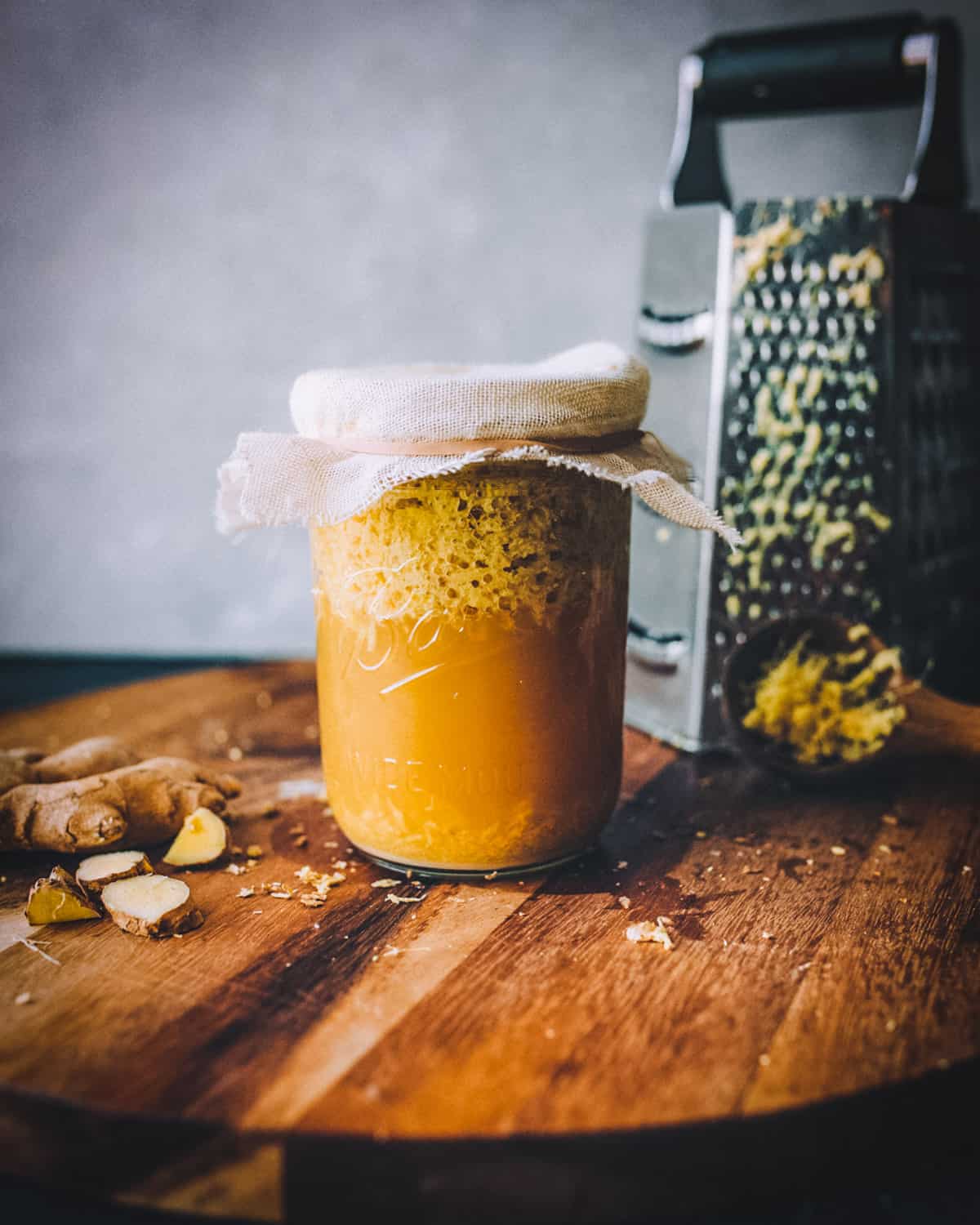
Ginger Bug Recipe
All that is needed to make a ginger bug is organic unpeeled ginger root, raw sugar, and filtered water. That’s it!
Some people suggest adding a squeeze of lemon juice, and I’m sure it wouldn’t hurt, but I usually just keep it simple.
Mix Ginger, Sugar & Water
First, get yourself a good sized hunk of organic ginger. Organic is important here because you are leaving the skin on and it houses all of the lovely bacteria and yeasts that you want.
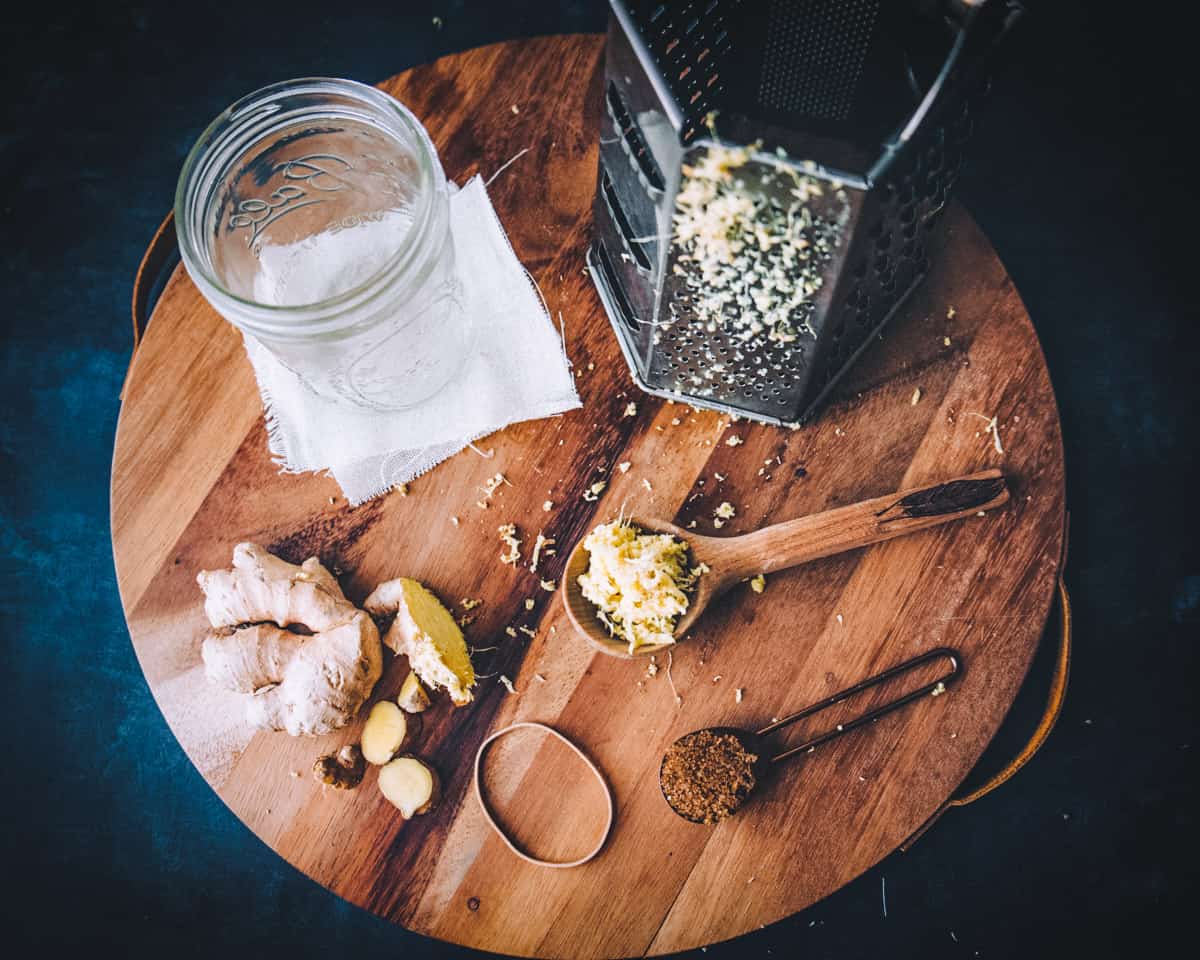
Grate the ginger until you have about one tablespoon. A cheese grater with small holes or a microplane work well for this.
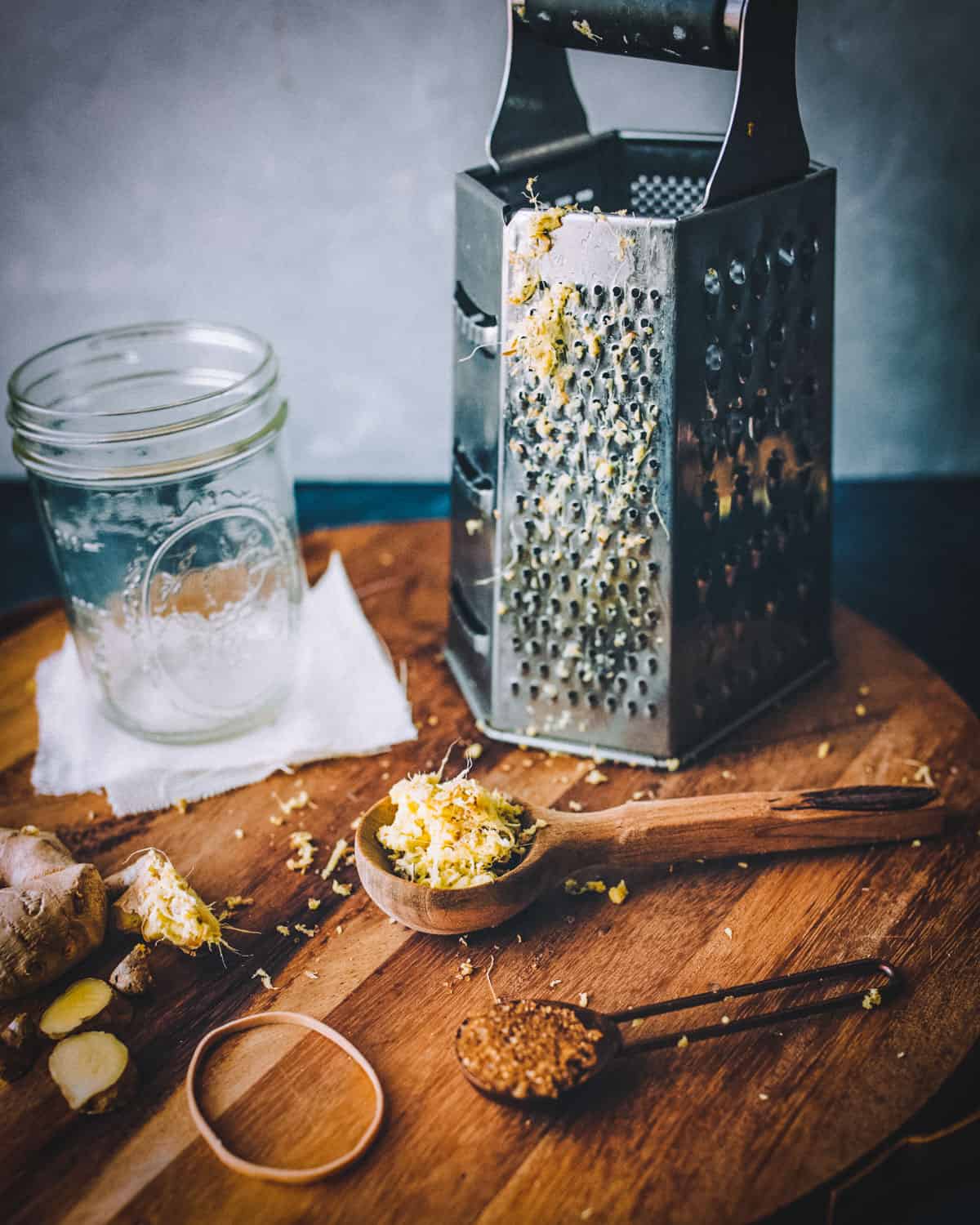
Then add the ginger to a pint jar with the sugar.
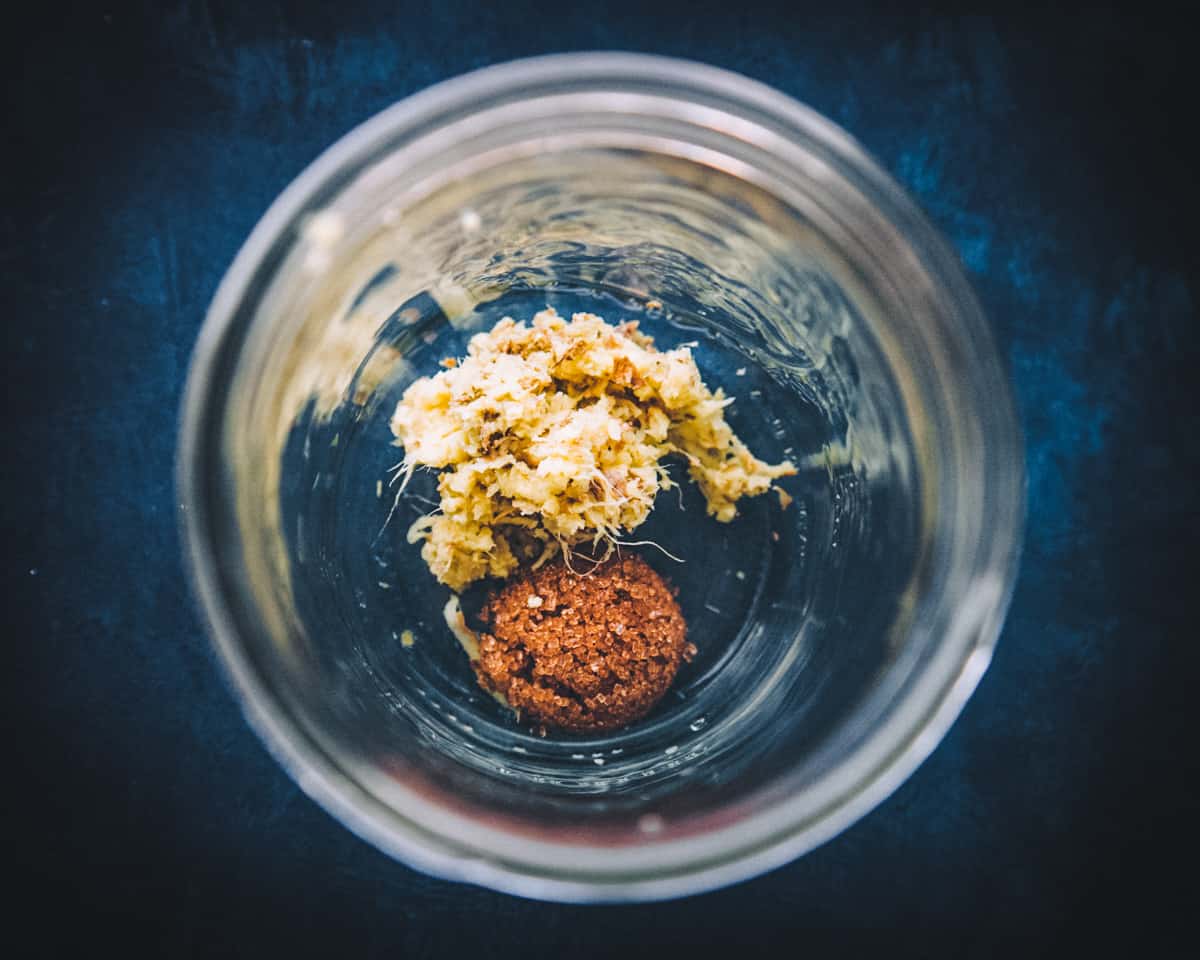
Next add the water and stir it all around well until the sugar completely dissolves.
That’s the slurry that you start with. Cover it up with a cheesecloth or other breathable cloth and a rubber band and let it sit on your counter for 24 hours.
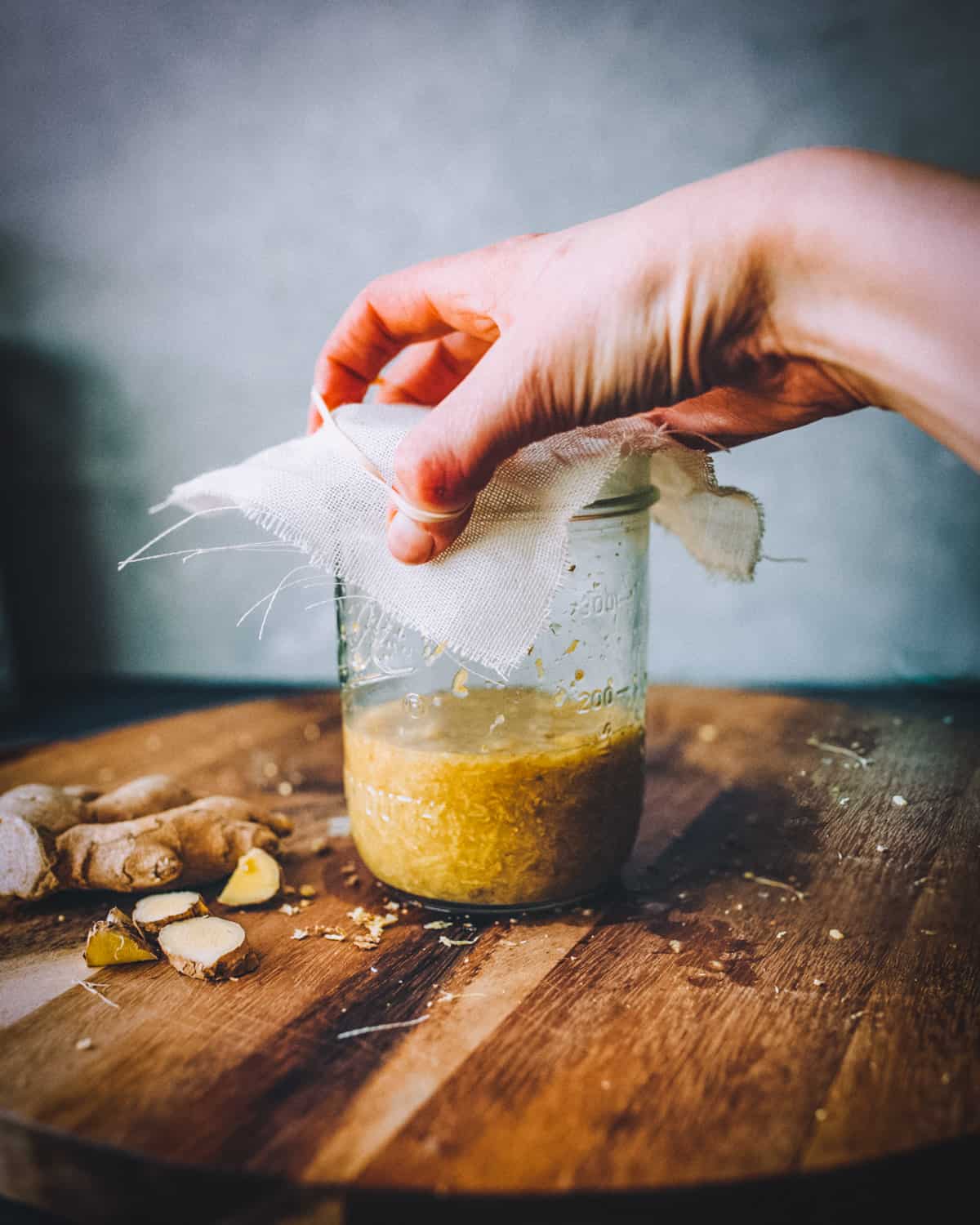
Stir it up a little anytime you think of it, every few hours or so.
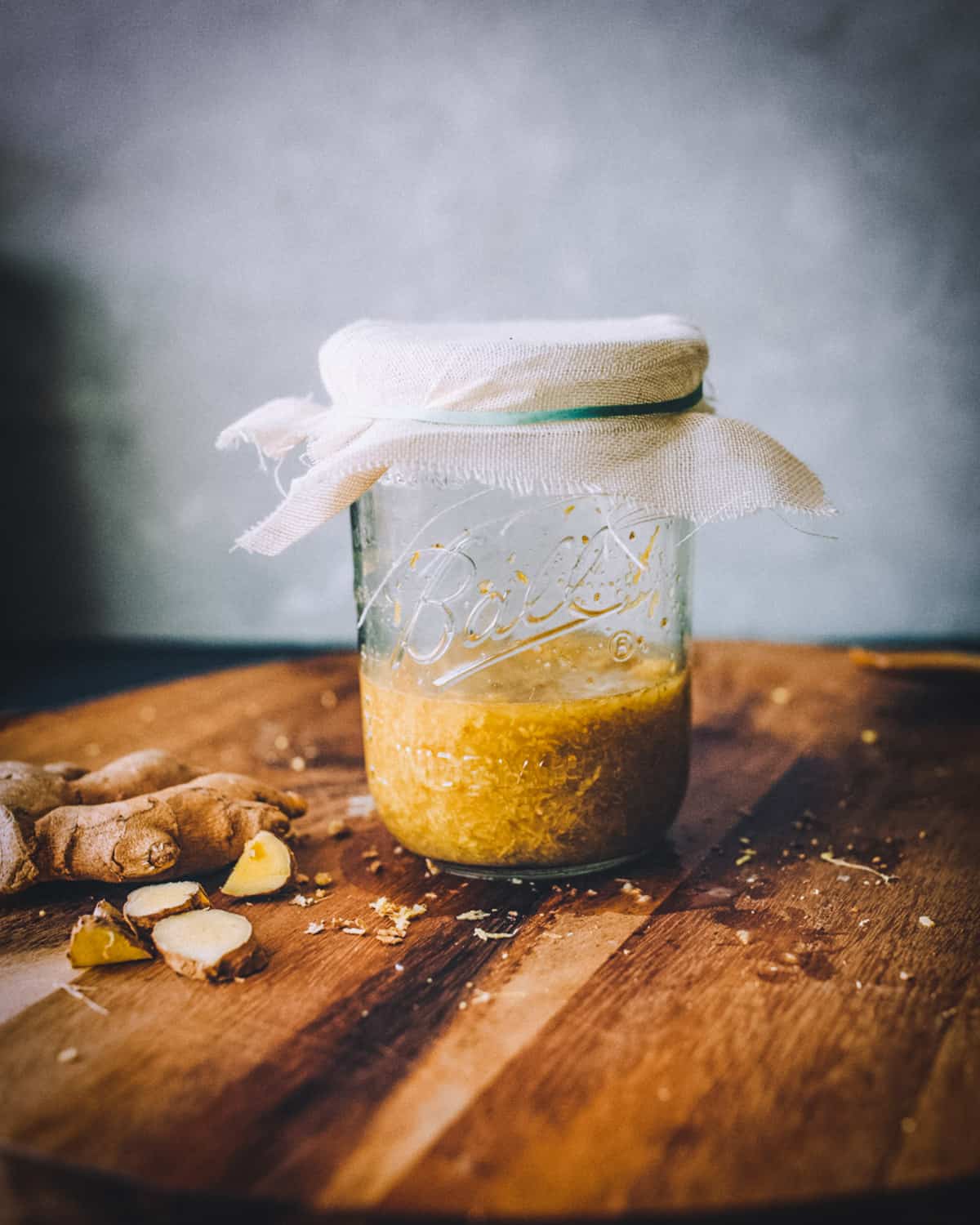
Feed the Ginger Bug Daily
Then, much like a sourdough starter, you need to feed it again after 24 hours. Same as before, 1 tablespoon grated ginger, 1 teaspoon sugar, and a little bit of water.
Keep feeding it and stirring it every day, and after a couple of days you should start to see some bubbles forming in the jar.
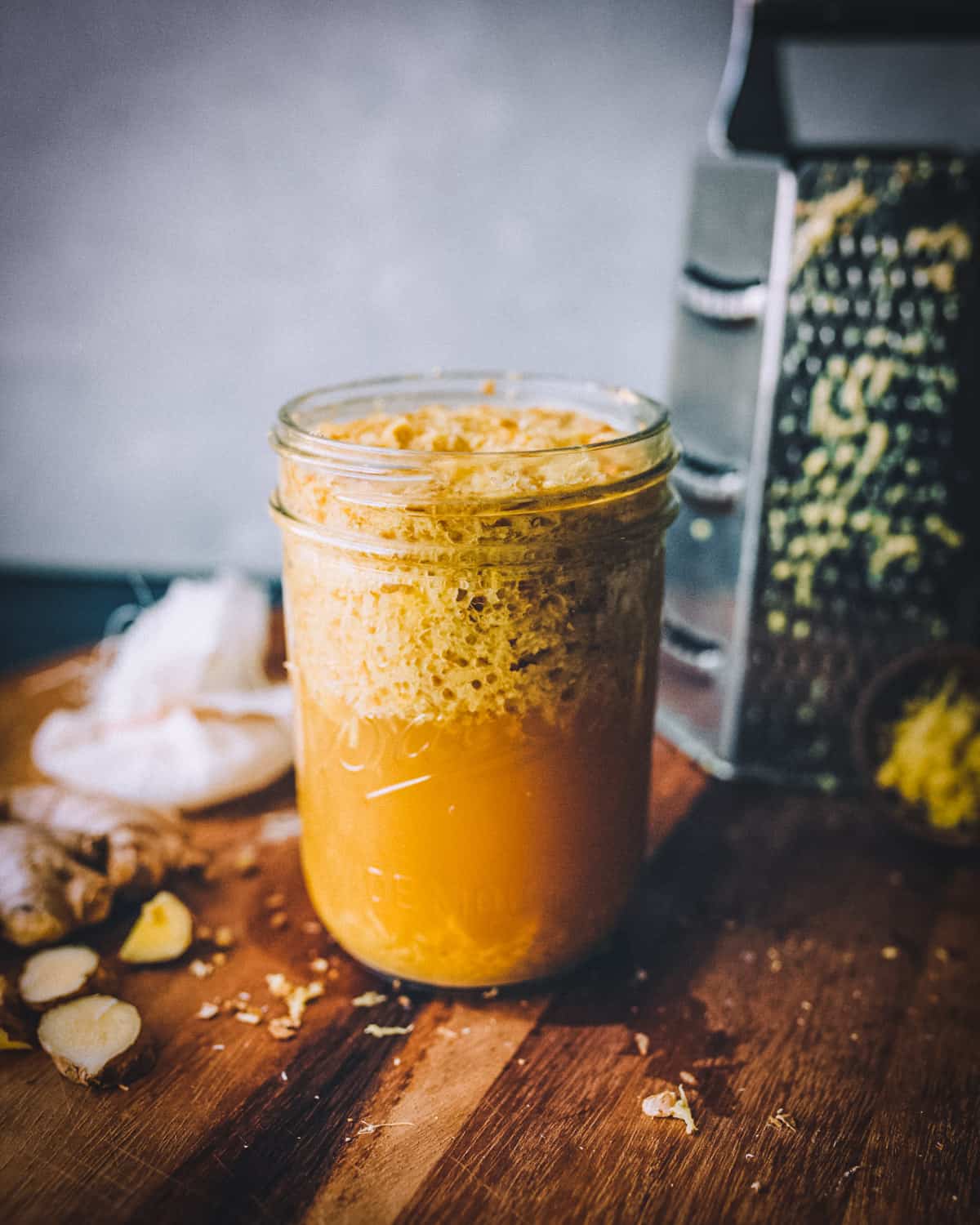
How to Use a Ginger Bug
After feeding your ginger bug daily for a week or so, the jar will start to get full and should have some nice bubbles.
That’s when it’s time to use it as a base to jump start homemade fermented sodas!
Ginger beer is a common way to use a ginger bug, but I like making all kinds of delicious wild sodas with it.
Related: 12 Fermented Soda Recipes

One of my favorite ways to use a ginger bug is to make this apple ginger beer! It’s absolutely delicious!
Homemade strawberry rhubarb soda is another favorite around here.
A refreshing homemade soda sure does sound good, especially when you can choose your own favorite flavors.
You can also make a turmeric bug and fermented turmeric soda with fresh turmeric root!
Who needs the store bought stuff with all of its high fructose nonsense when you can make your own healthy, probiotic soda?
Making a homemade ginger bug is such a simple concept that uses easy to find ingredients to make a wonderfully healthy base for homemade sodas! You couldn’t ask for anything more.
Naturally Fermented Soda Recipes Made With a Ginger Bug
Here are some more recipes I have for using your ginger bug.
- Strawberry Rhubarb Soda
- Fermented Root Beer
- Fermented Elderberry Soda
- Apple Ginger Beer
- Strawberry Water Kefir Soda
- Homemade Soda with Yarrow
Ginger Bug
Ingredients
- 1 Tablespoon organic fresh ginger unpeeled, grated
- 1 teaspoon raw sugar
- 3 Tablespoons filtered water unchlorinated
Instructions
- Put the unpeeled grated ginger and the sugar into a jar.
- Add the water and stir it all around well until the sugar completely dissolves.
- Cover the jar with a cheesecloth or other breathable cloth and a rubber band and let it sit on your counter for 24 hours. Stir it up a little every few hours or anytime you think of it.
- Feed the ginger bug daily by adding 1 tablespoon grated ginger, 1 teaspoon sugar, and a little bit of water.
- Keep feeding it and stirring it every day, and after a few days you should start to see some bubble action. When the jar is full and bubbly, it's ready to use.
Notes
- Total fermentation time before the ginger bug is ready to use is 5-7 days.
- Soda recipes will require about ½-1 cup of ginger bug depending on how large a batch your are making.

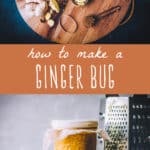
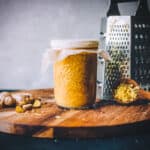

I’m a little worried that my bug hasn’t Mold on top. It seems to have a thick skin which is white on top. Do you think I should start again?
How long can the ginger bug sit before use? Is there a way to preserve it? Thanks!
Hi Lindsay, as long as you keep feeding it daily it will continue to live and thrive!
My bug hasn’t started bubbling, and it’s been 5 days. What do you suggest??
Do not use chlorinated water. If ya live in town boil your water for about 15 to 20 min. Let set till room temp, then make your bug.
After a week with no bubbles I would probably scrap it and start over. Make sure you are using organic ginger with the peel on!
Can i use the liquid in place of whey to ferment vegetables?
You can definitely try that! I’ve never done it so I’m not sure what the results will be.
This is really cool. Ty.
Hi how long do you have to ferment it before you can use it? And what percentage of the initial bug do you use when making sodas?
I usually ferment it for 5-7 days before using it to make sodas. It’s important to make sure the bug is nice and bubbly and fermenting well first. I usually use about 1/2-1 cup of the bug when making sodas, depending on how big of a batch I’m making.
Wendy, is your water treated? If so, there is not only chlorine in the water, but also chloramine, which is a form of chlorine that does not evaporate. If your water is treated, this is likely what is preventing your ginger bug fermentation to start. You can neutralize the chloramine by adding some lemon juice (I don’t know how much but the info is out there) or, get some distilled or spring water, instead. I hope this is helpful!
Hi coleen – I’ve put up the ginger bug, and I noticed that there is a layer of white stuff on the bottom of the jar (on the very bottom). I’m getting bubbles and it looks ok otherwise. Is it ok to use? Thank you.
Yes that is perfectly fine, it’s just a by product of the fermentation process.
Why my ginger bug don’t have bubbles? Now is 5 days still no bubbles!
I would love to know a recipe using this exact ginger bug to make ginger beer/ soda. I have been looking every where for a good reliable recipe.
Hi there! My ginger baby has been breweing for almost a full week and doing well. My question is, at any point soon, will I need to store it in the fridge?
Thank you!
Thanks for your clear recipe! I really want to try this!
May I ask one thing? Please ….make your grey fonts black! If you have 20 20 vision it’s fine..if you don’t it can be really hard to read, and I am sure you want everyone to be able to read your articles! Thank you so much!
I love it in my apple cider vinegar, lemon juice, & honey.
My First Ginger Bug! I started a batch with Coconut Palm Sugar today. I researched it a bit and it’s said to have a lower glycemic index than regular table sugar. … and. The major component of coconut sugar is sucrose (70–79%), glucose, and fructose (3–9% each).
~I love the Process. Simply collect the Sap of the Coconut Palm and evaporating the liquid.
Do you foresee any problems with this Sugar substitution? Thanks, debra
I’ve heard that it doesn’t work well with anything other than regular sugar, but I’ve never tried it so I’m not sure what the results will be. Let us know if it works!
How big of a jar needs to be used for making the “bug”?
Thanks Colleen, you’ve given me the “bug” to make some more ferments. :) We made water kefir for years but eventually our filtered but still chlorinated water stressed the grains out and they went kaput. I think I’ll try your ginger bug because we sure love the fermented drinks!
I love ginger beer!!! Making a “ginger bug” is new to me. Can’t wait to start the process!!
Hello, I read in your other comments that the microbe’s end up eating the sugar but there may be some sugar left behind in the beverage when we consume it. So, to clear things up how much sugar does a person end up drinking in 1 serving of your soda? I am really interested abuot making your tumeric and ginger bug but I am concerned about the consumption of large amounts of sugar!
That is really variable on a lot of things, so I can’t give you an exact answer, unfortunately!
wow! sounds amazing! I wanna try! but how much sugar did you end up adding? so when I make a gallon of soda, how much should I add this ginger bug?
I can’t wait to try this out!
always appreciate your knowledge! Thank you for sharing!;-)
Hello,
Could one use distilled water?
Trynna
Hello! Thanks for the recipes. How do you maintain your bug? Other recipes have different measurements they add weekly in the refrigerator, but what works for you? Also, when you remove some of the liquid for your soda, what do you replace it with?
Hi, I was wondering if coconut sugar could be used in this recipe
I’ve never tried it so I don’t know for sure, but my guess would be no.
I would think that if honey wouldn’t work then agave and coconut nectar probably won’t either but that the dry coconut sugar that resembles brown or raw/turbinado sugar could probably be used.
What a simple idea to make bug! I was searching places for it but found you eventually. Great work. I wonder if one can substitute agave (plant sugar) or even honey, organic of course for raw sugar. Also I would be very interested if you have any idea about how to find uncontaminated water as pure as possible without resorting to expensive filtration. I like things simple and also affordable as my idea is to live a minimalistic life without resorting to buying if possible. My dream is to live in a moneyless society where all things needed come from the land. Keep up the good work.
Mine went moldy. Yuck. Any ideas?
Do i need to wash the ginger or leave as it is to make it
If you are using organic ginger, I wouldn’t worry too much about washing it – unless it’s particularly dirty.
Is it possible to use honey instead of sugar in your ginger bug?
I have never tried it with honey, so I’m not sure about that. Most recipes I see call for sugar, and I’ve even seen a few say specifically to not use honey, but I don’t know why that is. It would seem to me that it would work, but I guess we’ll have to experiment to find out for sure :)
Honey might kill the yeasts
Raw honey is anti-fungal, anti-viral and anti-bacterial. In this case you want PRO-bacteria. You could maybe try maple syrup but I would add slightly more as the sugar content is less than pure sugar.
Hi Colleen, thanks for sharing how you make your ginger bug. I love making ginger soda. Grating the ginger is new to me, I usually just use chunks, about quarter inch square. I don’t through it out just keep feeding it for the next batch.
As for the honey. Honey has anti-bacterial properties and thus fight the fermentation process..raw cane sugar is great to use also agar or maple syrup instead of sugar.
I hope that answers your question. Thank you again for your post.I will try shreded ginger next time.
I just made ACV and the website I was reading the directions said that it is not necessarily advisable to use honey because the natural anti bacterial properties may kill the wild yeast and bacteria that you need to ferment. Perhaps it is the same principal here .
Honey looses its anti microbial properties once you add water and dilute it down. This is why mead can be made and why honey ferments when it is pulled from a hive before the bees have finished curing it. In fact honey has many microbes in it that wake up once the sugar content is diluted with water.
This is exactly the same way I make my ginger bug. :) Then , I usually use it to make ginger soda or fizzy limeade. Even people who think I’m totally crazy for fermenting things love it!
How do you use it to make a soda/ drink?
Good question, I made one here: How to Make Strawberry Rhubarb Soda
Thanks Colleen, I’ve tried fermenting with little success. You make it look so simple, thank you! I’m going to give fermenting another try. The Ginger Bug looks great.
Thank you, I’m doing this! Looking forward to part 2. You should do a book!
Thank you so much, glad that you like it! Maybe someday in the future I’ll do a book…
Enjoying your articles, and anxious to get the remaining instructions on complete this “Ginger Bug.” Will you be posting the second half of this “how-to” soon?
Thanks so much!
Sherry G
Yes, I will! Next week, I think :)
Amazing Colleen! Always amazed at what you know!
This is awesome, do you have the recipe to add the bug into the ginger beer?
Sorry also was wondering if you ever substituted honey for the sugar?